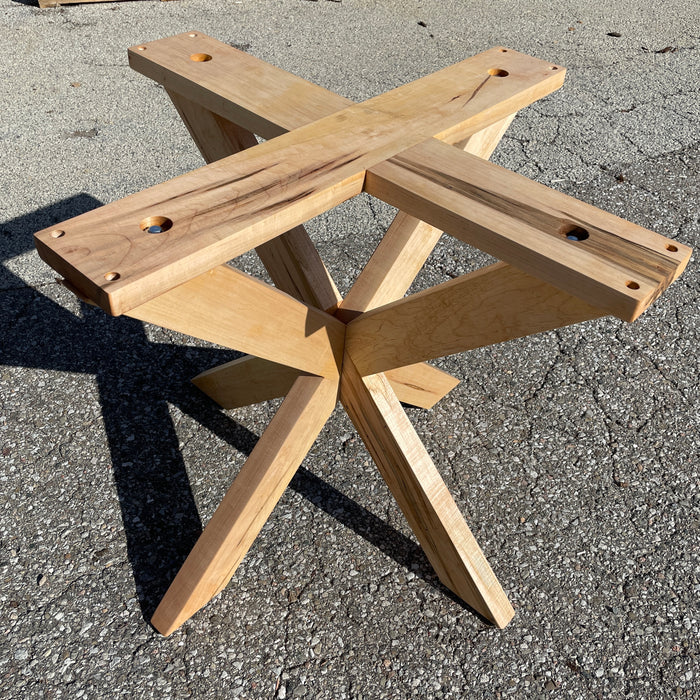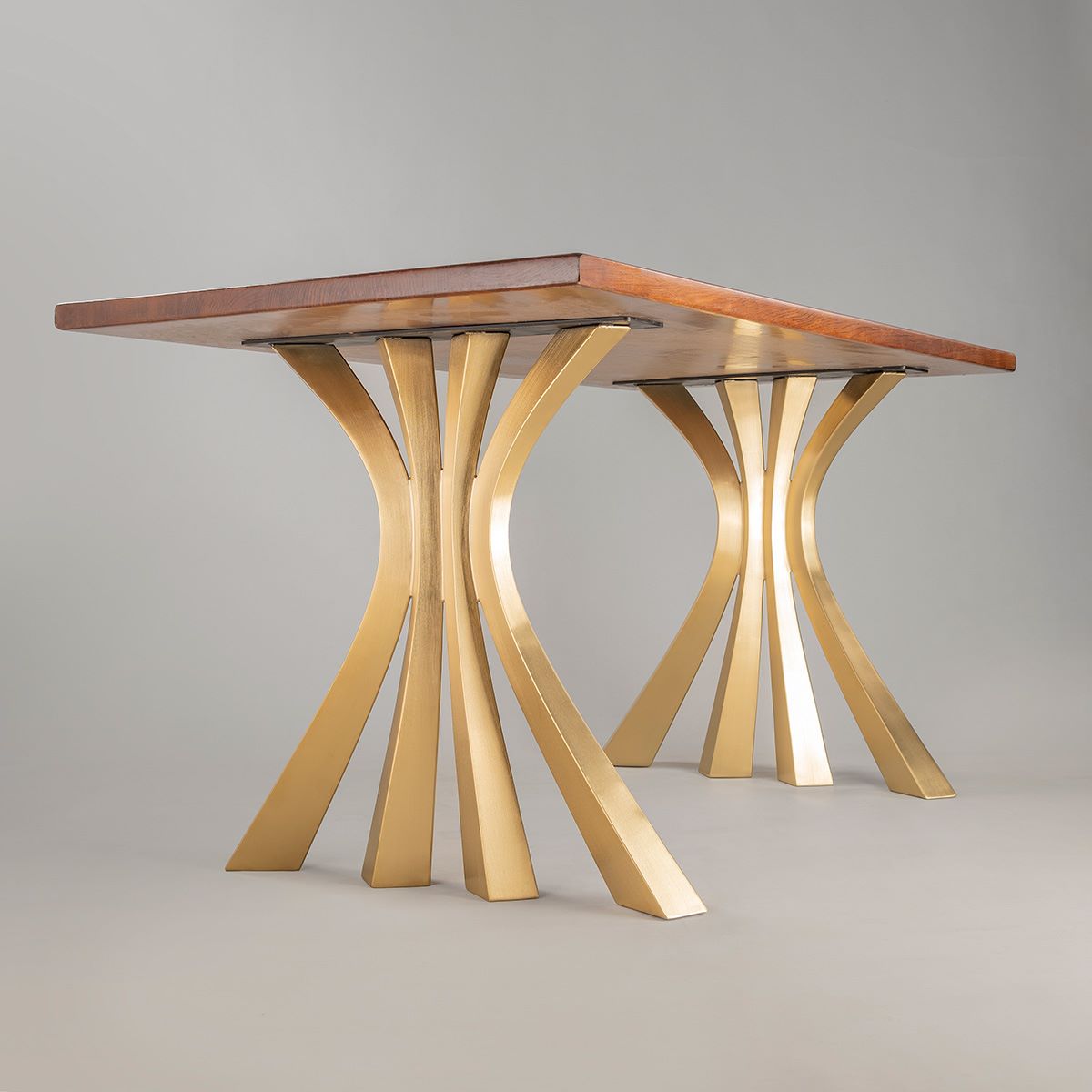Boost Your Eating Experience with Traditional Dining Table Legs Wood
Boost Your Eating Experience with Traditional Dining Table Legs Wood
Blog Article
Checking Out the Various Sorts Of Eating Table Legs Timber for Your Eating Room
The option of table legs timber can greatly affect both the functional and visual high qualities of your dining room. Solid wood options, such as oak and walnut, give a timeless look with unrivaled sturdiness, while crafted timber alternatives supply ingenious layouts that imitate the richness of all-natural grains. Additionally, the expanding pattern of redeemed timber presents a sustainable aspect that interest ecologically conscious customers. As we explore these numerous options, it becomes vital to take into consideration not only the visual charm yet also the practical ramifications of each product choice. What aspects should guide your decision?
Strong Timber Options

Unlike engineered materials, solid wood is less prone to warping and damage over time when correctly maintained. Each item of strong wood is unique, showcasing specific qualities that add to the beauty and personality of the eating table.
In addition, strong timber can be completed in countless means, varying from natural oils to tarnished finishes, enabling house owners to personalize their furniture to match their decor. In recap, selecting solid timber for eating table legs not just makes sure structural integrity yet also improves the visual charm of the dining location, making it a beneficial financial investment for any type of home.
Engineered Wood Alternatives

Plywood, constructed from multiple layers of wood veneer, is specifically solid and stable, making it an excellent selection for dining table legs. Its layered make-up enables it to endure changes in humidity and temperature far better than conventional solid wood. MDF, on the other hand, supplies a smooth surface area for painting or veneering, making it possible for developers to accomplish a sleek look while maintaining architectural integrity.
When picking engineered wood choices, it is vital to take into consideration the desired use and wanted visual. These products not only boost the capability of eating spaces however likewise enable for greater design flexibility, guaranteeing that traditional and contemporary styles can exist side-by-side sympathetically.
Reclaimed Timber Includes
Reclaimed wood provides an one-of-a-kind blend of sustainability and personality, making it a significantly preferred choice for eating table legs. Sourced from old barns, manufacturing facilities, and various other frameworks, redeemed timber embodies a history that brand-new products simply can not reproduce. Each piece lugs its very own tale, noted by distinctive flaws, knots, and differing grain patterns, which add to a table's distinct aesthetic appeal.
Along with its aesthetic appeal, reclaimed wood is an environmentally friendly choice. By repurposing previously used materials, it lowers the need for new lumber, therefore helping to preserve see page forests and decrease waste. This straightens with an expanding consumer choice for lasting techniques in decor.
Moreover, redeemed wood is frequently more resilient than newly collected wood due to its age. The all-natural drying out procedure that reclaimed timber undergoes cause a denser and more powerful product, making it much less susceptible to bending and splitting. This boosts the durability of eating tables, enabling them to hold up against the roughness of day-to-day use.
Softwood vs. Wood
When choosing dining table legs, comprehending the distinctions between softwood and hardwood is crucial for achieving both visual and functional goals. Softwoods, stemmed from coniferous trees, such as pine and cedar, are identified by their lighter weight and simplicity of adjustment. They normally exhibit an even more rustic look, making them ideal for laid-back or country-style eating spaces. Softwoods are normally much less durable than hardwoods, which can be a consideration for family members or those seeking longevity in their furniture.
On the various other hand, woods, sourced from deciduous trees like cherry, maple, and oak, are renowned for their thickness, toughness, and longevity. The intricate grain patterns and rich shades of woods give read the article a sophisticated and timeless allure, making them ideal for formal dining settings. While woods tend to be much more costly and much heavier, their resilience versus deterioration commonly validates the financial investment.
Inevitably, the choice between softwood and wood for click over here now eating table legs must line up with your design vision, use demands, and budget plan, making sure that your dining space mirrors your individual design while remaining useful with time.

Treatments and surfaces
The aesthetic allure and longevity of table legs can be dramatically boosted through various finishes and treatments. These procedures not only shield the timber from damages yet additionally boost its look, allowing it to enhance varied indoor designs.
One common therapy is discoloring, which penetrates the wood and improves its natural grain while including shade. Discolorations supply an abundant, elegant look, enabling home owners to match their furnishings with existing decor. Conversely, clear coatings such as polyurethane or varnish produce a safety layer without modifying the timber's original hue, making sure toughness against damage.
In addition, natural oils, like tung or linseed oil, nourish the timber and use a refined sheen, all while being environmentally friendly. These oils enable the surface to take a breath, avoiding moisture accumulation and prospective warping.
For those seeking a rustic appeal, weathered or troubled surfaces can be applied to produce an aged look, including personality to the piece. Ultimately, the option of finishes and therapies relies on personal choice, wanted aesthetic appeals, and the particular timber type, making it vital to consider these aspects when picking dining table legs for your area.
Conclusion
Solid woods, engineered choices, and recovered alternatives each deal distinct advantages, catering to various preferences and needs. Eventually, the option of wood type must line up with wanted style, toughness, and ecological factors to consider, boosting the overall dining experience.
The choice of eating table legs wood can exceptionally affect both the useful and visual top qualities of your eating area - Dining Table Legs Wood. Strong wood options, such as oak and walnut, give a classic look with unmatched toughness, while crafted timber options provide ingenious styles that imitate the richness of natural grains. Solid wood offers a classic quality that can raise the total style of an eating room. Each item of solid wood is distinct, showcasing individual characteristics that include to the beauty and character of the eating table
Additionally, recovered timber is often more durable than newly gathered wood due to its age.
Report this page